There’s nothing more appetizing than a perfectly warm and sufficiently sized authentic Italian coffee that is rich in flavor and heavily satisfying. When in Rome, or anywhere in Italy for that matter, do as the Italians do, and do it the right way. In our world, we are numb to the taste of pure coffee, due to the destructive influence of big name companies like Starbucks that brand an image alongside their product.
We perceive coffee as means of expressing individuality. For example, if we like our latté to with a shot of caramel, venti, or skinny, it shows to society who we are, rather than just appreciating the taste of coffee for what it is. Today’s society has lost the true meaning of what coffee should taste like, so to regain that heritage which was once so prominent, we have compiled the ultimate guide to Italian coffee drinking.
Table of Contents
Italian Coffee; Lost in translation
If you find yourself in an Italian coffee shop and fancy a hot milky beverage, it’ll be frankly an unpleasant surprise, when you order a ‘Latté’ and receive a glass of milk. Instead, if you crave what we consider a ‘latté,’ ensure that you request a Latte Macchiato. This translates to ‘marked milk,’ the ‘mark’ being the minute amount of coffee hidden in the fat milk. If you want something a little stronger in coffee but still fairly milky, ask the server for Latte Macchiato Scuro, which is just ‘darker.’
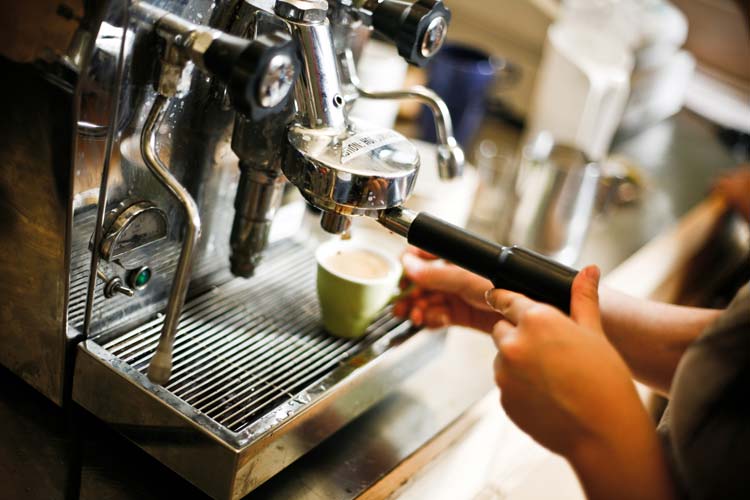
The same goes for Espresso Macchiato, either a single or double shot of coffee topped with just an inkling of creamy milk; an adamant and tiny cappuccino. The most common misconception is that a Macchiato is a giant fluffy bowl of caramel like you get at Starbucks to plagiarize a real drink with large amounts of rich flavor and depth. If you describe this to an Italian server or barista, they would probably show you the door – Arrivederci!
Drinking Italian coffee in a bar
Italians drink coffee standing at the bar, which is a similar structure to a regular bar but instead of alcohol, it serves gorgeous little coffees. Meet charming locals knocking back espressos at the counter in a matter of minutes, instead of wasting time. Nowadays it is a common sight to see individuals and groups of friends lounging around in Starbucks all day. They’re consciously projecting their hipster image for everyone to see, while they hunch over their MacBook and various other Apple products.
Even the McDonald’s in Central Italian cities have an air of class surrounding them, equipped with proper barista machines and locals enjoying a latte macchiato accompanied by a bite to eat. Rule of thumb, a lot of coffee bars in Italy charge you more if you take your drink to a seat, so unless you see others doing it, it’s probably best to just stand at the bar, and it knocks back.
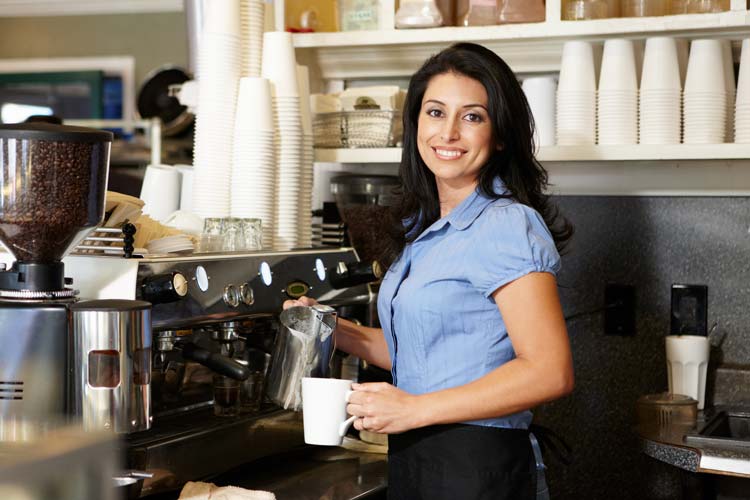
Coffee Culture in Italy
Although coffee is grown in other parts of the world such as Columbia, it has its roots deeply in the country’s culture and image. Italy imports over 8 million bags of coffee every year to satisfy their cravings and to fund the many coffee shops scattered over towns and cities. The first coffee shop in Italy opened in San Marco square in Venice in the year 1683, much to the disgust of the church. The Catholic Church referred to coffee as the ‘Devil’s drink’ due to its intense, rich flavors.
In today’s world, Italians drink coffee in almost a formal way, throwing back sly double espressos at multiple times of the day. The invention of the ‘Mocha Pot’ by Alfonso Bialetti revolutionized the way Italians drink their coffee. It is equivalent to Italian homes as the kettle is to Brits. Over the years its design has never changed which gives it a truly authentic feel.
Coffee is so much a part of Italian culture that the idea of not drinking it is unheard of.
Change the way you drink coffee today by understanding how should drink it. Seek out independent coffee stores nearby if you’re not in Italy itself, and discover a whole new world of coffee flavors that have nothing to do with big name brands. Here is a list of some irresistible Italian style coffee shops that could be near you, waiting to be discovered!
London – Bar Italia! -> http://www.baritaliasoho.co.uk
New York – Zibetto Espresso! -> http://www.zibettoespresso.com
San Diego – Caffe Italia! -> http://caffeitalialittleitaly.com
Rome – Tazza D’Oro Coffee Shop -> http://www.tazzadorocoffeeshop.com/
15 Types of Italian Coffee
Just as the dishes, Italian coffees are also diverse. One can get seriously lost when going to an Italian café. If you only say to the clerk one cup of coffee, please they’re going to look at you with confusion. To make it easier for you to order, we list 15 types of Italian coffee. There are more out there, of course. You don’t have to know all of them, though. Keep a perfect balance – enough to cause a surprised smile on an Italian barista’s face while you impress him/her with your knowledge, but not too much, so that you can also ask them questions about their specialty.
1. Espresso
Espresso is the most common of all Italian coffee drinks. It’s a small (20 to 25ml) shot of strong coffee served in a tiny cup. Since it’s the most basic form, in menus espresso is often listed as caffè. To order one, you can just say un caffè.
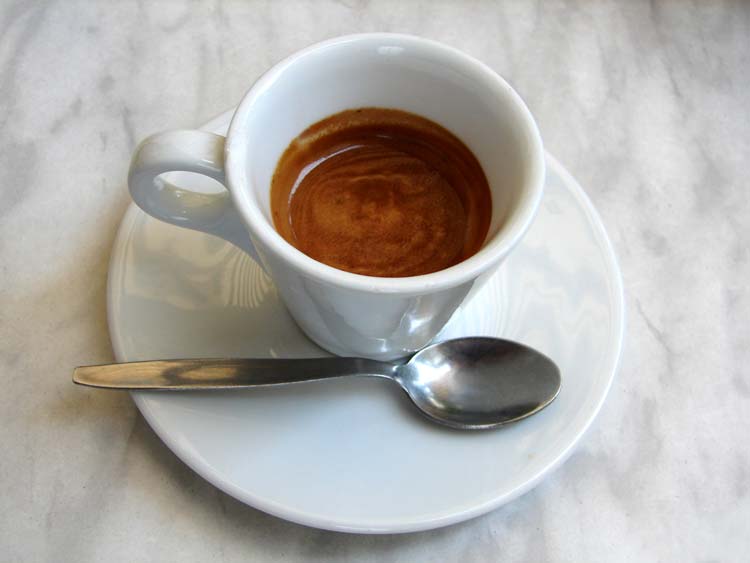
2. Doppio
Doppio is espresso for heavy drinkers. It’s a double espresso – two regular servings in one cup. Perfect if you need an intense waking up session.
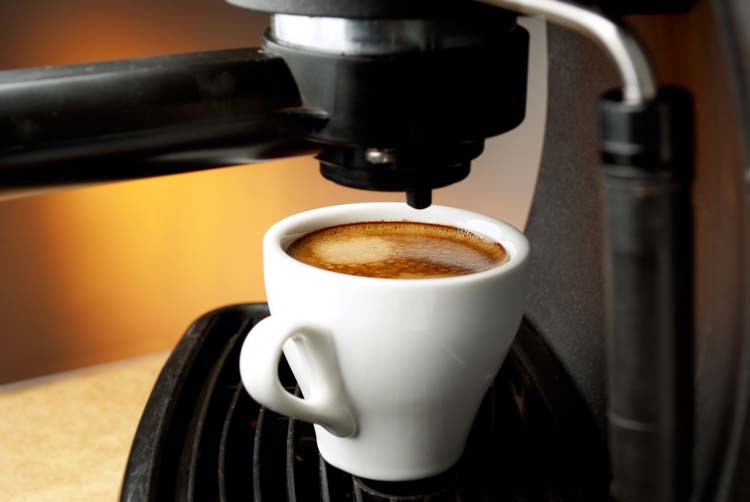
3. Cappuccino
Cappuccino is famous worldwide, and very familiar, so many have even forgotten it’s an Italian export. It is probably beside espresso the most famous Italian coffee.Nevertheless – it is, and no matter how fantastic cappuccinos you’ve already drunk, you must try one when visiting Italy. It typically consists of 1/3 espresso, 1/3 steamed milk, and 1/3 foam. Since it’s quite heavy as for a drink, Italian usually don’t drink it after a meal as they do with espresso. You can do it through if you enjoy having a dessert-like coffee after lunch. It’s worth knowing that cappuccino comes in many variations. In addition to the classical one, you can also order for example cappuccino scuro (a bit darker version with less milk) or cappuccino Chiaro (lighter, with more milk).
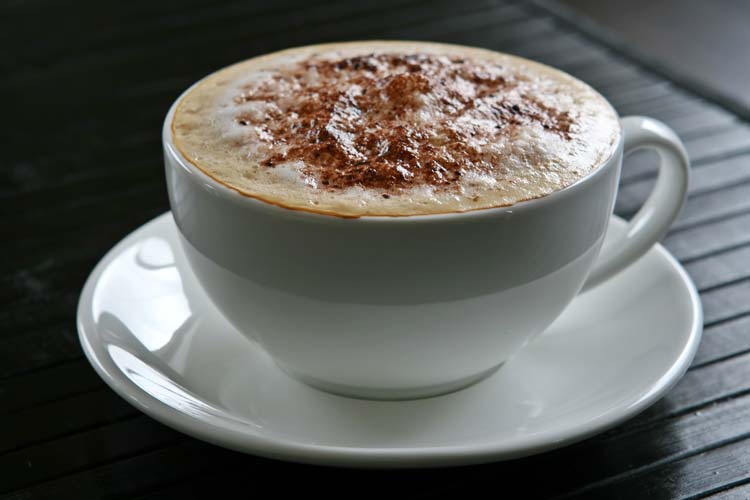
4. Ristretto
Ristretto consists of the same amount of ground coffee as espresso, but half of the usual amount of water. The flavor is more concentrated and stronger. Ristretto can also be called caffè stretto.
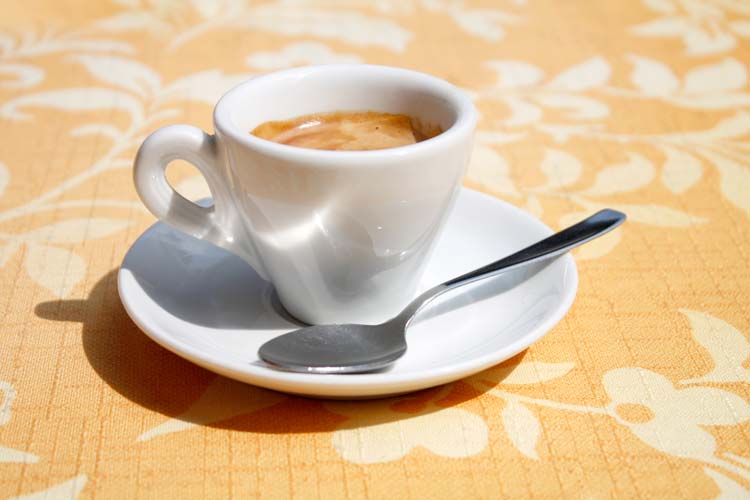
5. Macchiato
If espresso is a bit too strong for you, or you simply prefer coffee with milk than black, a macchiato is a good option. It were an espresso but softened with one or two drops of hot milk. You can also ask for macchiato caldo, and you’ll get it with steamed milk, or for macchiato freddo, so that cold milk will be added instead of warm. If you like coffee to be a bit foamy, order a macchiato con schiuma di latte – this variation contains froth milk.
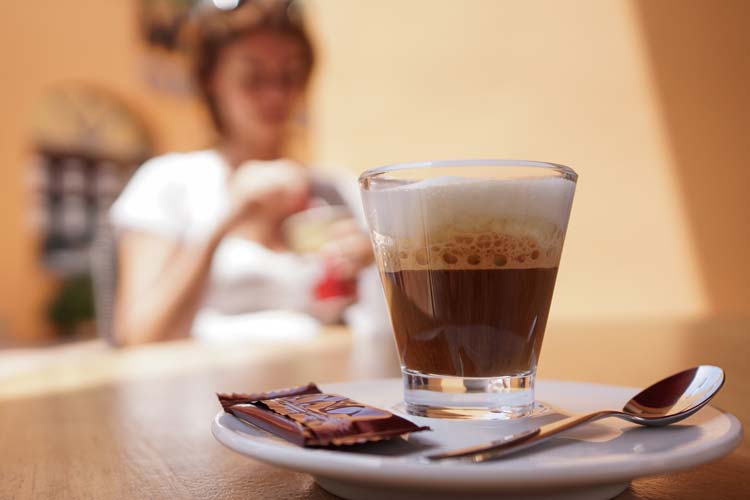
6. Marocchino
Created in Alessandria, Marocchino is an ideal solution for those who have a sweet tooth and don’t particularly enjoy the bitter taste of Italian coffee, but at the same like to get a caffeine kick once in a while. Marocchino is made of a shot of espresso, cocoa powder, and foamed milk.
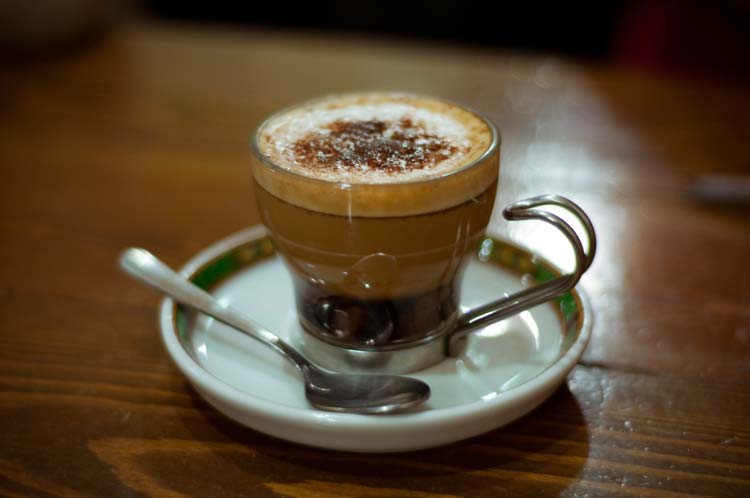
Photo: Flickr
7. Espressino
Espressino sometimes gets confused with marocchino, but it’s not the same. In addition to a coffee shot, cocoa, and milk, it often contains Nutella or ice-cream. Besides, the composition differs; espressino has the sweet ingredients both on the bottom and the top of the glass.
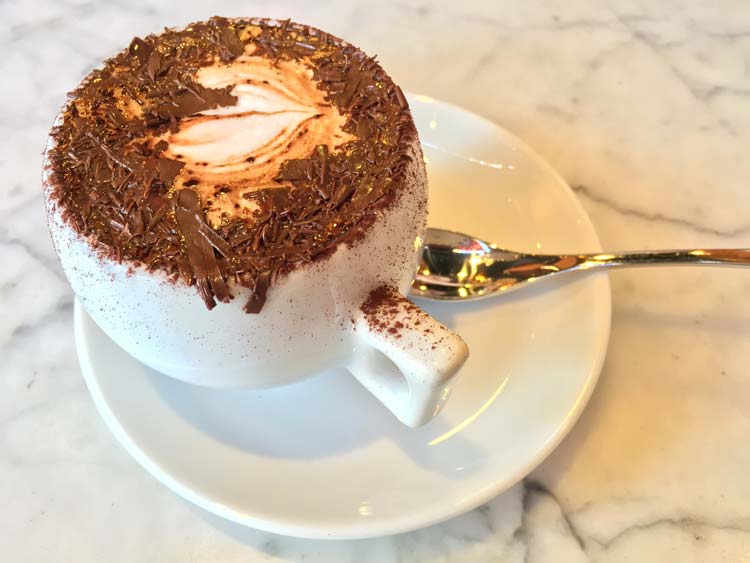
8. Latte
Okay, here’s an important tip: don’t order a latte in Italy. It only means milk, and that’s what you’ll get if you ask for it. While baristas of many countries will get your point and serve coffee with milk, in Italy, most likely, you’ll get what you’ve asked for. If you want this milk with a shot of coffee, you must order caffè latte. It’s a yummy drink, but for those who like their coffee milky, since it contains only 1/3 coffee and 2/3 warm milk plus a little bit of foam.
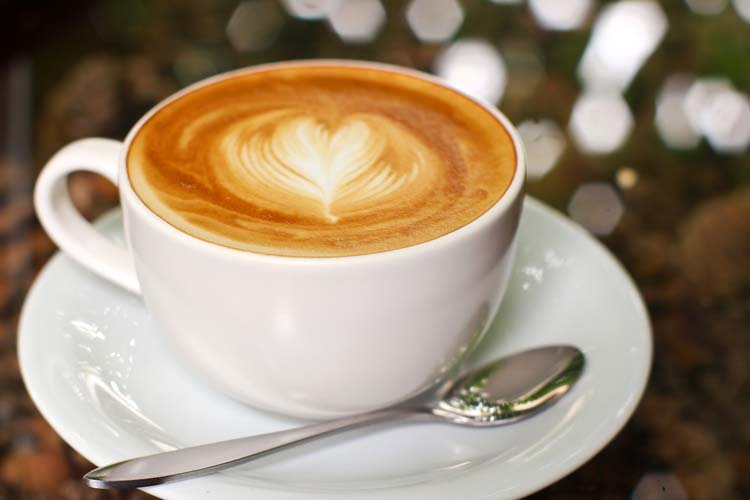
9. Lungo
Lungo translates to long, and the name’s not accidental. Caffè lungo is coffee with a double amount of water (when you compare it to espresso), so its flavor is not as intense. Don’t confuse it with caffè americano – in lungo, all the water is brewed, while in Americano water is added to an instant espresso.
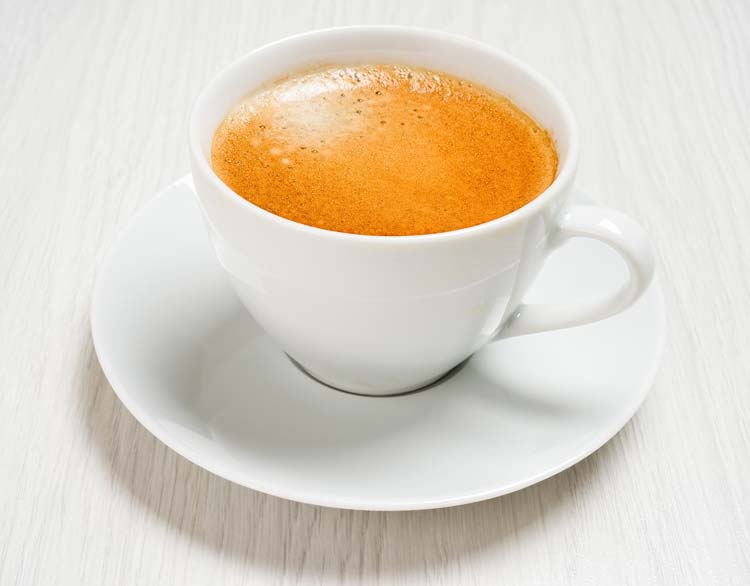
10. Freddo
Freddo means cold, so as you can figure out, it’s a coffee which they serve cold. Italians use the word freddo by itself for ordering a simple cold espresso. It’s either made right when you order it and served rather lukewarm, or prepared before and kept in the refrigerator before serving, which makes it freezing.
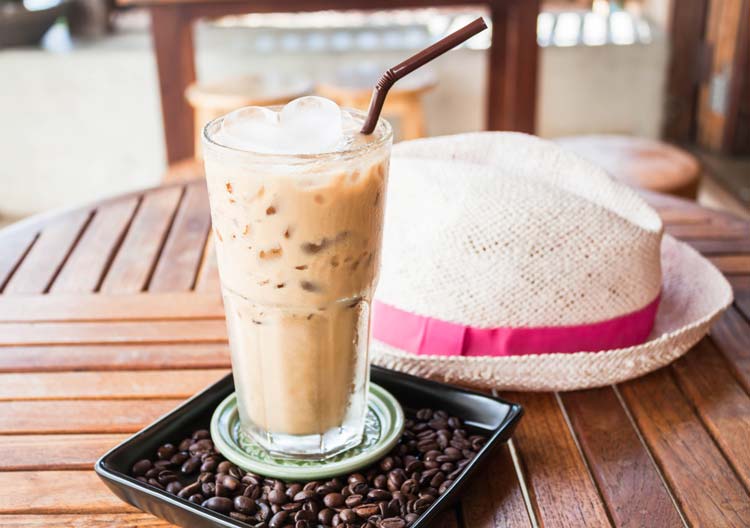
11. Hag
If you like the flavor of coffee, but don’t want or can’t drink beverages with caffeine, you should remember the term hag. It is also familiar as un deca, the hag is a decaf coffee. You can get an espresso hag, cappuccino hag, lungo hag, etc.
12. Panna
Panna isn’t a type of coffee. It is rather merely cream that you might want on top of your beverage or not. If you ask for caffè con Panna, you’ll get a shot of espresso with a bit of cream on the top.
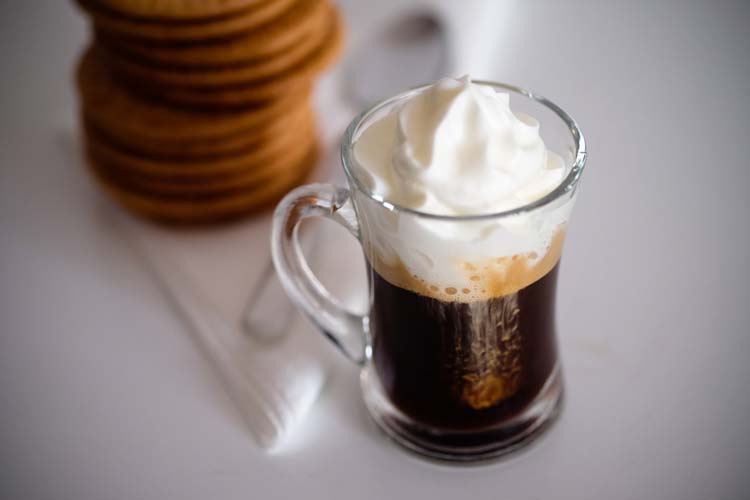
13. Orzo
Caffè d’orzo is a caffeine-free drink that exists of ground barley. Its flavor reminds espresso, but it’s a bit more delicate and somewhat earthy. Caffè d’orzo is a great alternative for those who stay away from caffeine.
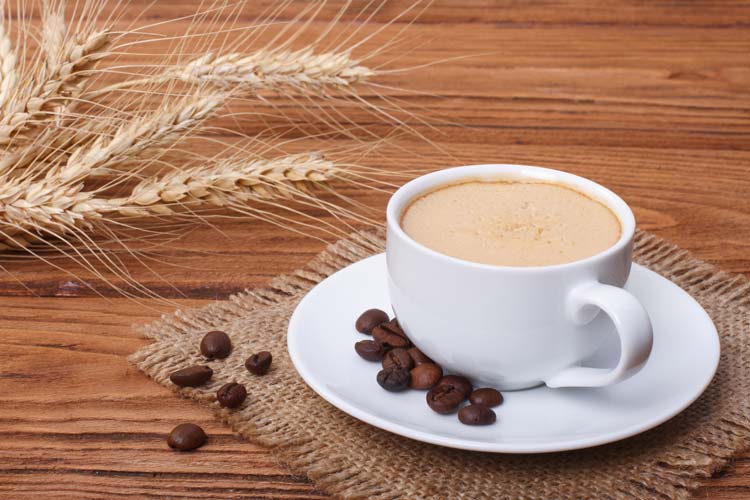
14. Ginseng
Caffè al Ginseng is an espresso that contains ginseng. Besides of adding a bit of a nutty flavor, ginseng makes you more energetic and gives you more focus. Many say its taste is similar to Chai Tea Latte widely known in the United States.
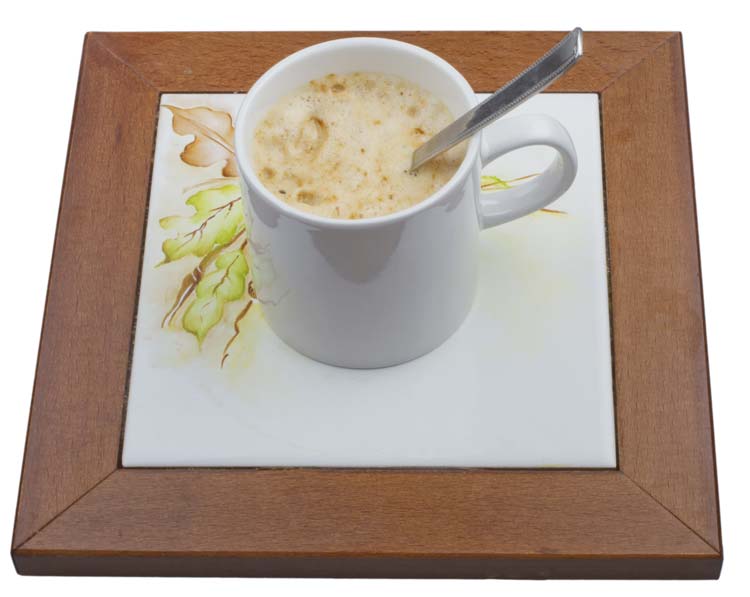
15. Corretto
Corretto takes Italian coffee to another level. It’s a mix of alcohol with a shot of espresso. To make a cornetto, they most often use brandy, Grappa, and sambuca, but you can ask for something else if you fancy so. To order it, you should say un caffè corretto alla grappa and just change the last word depending on what liquor you prefer. Interestingly, corretto in Italian means correct, which seems to imply only coffee with liquor is the right one. Well, we’ll leave it for you to judge!
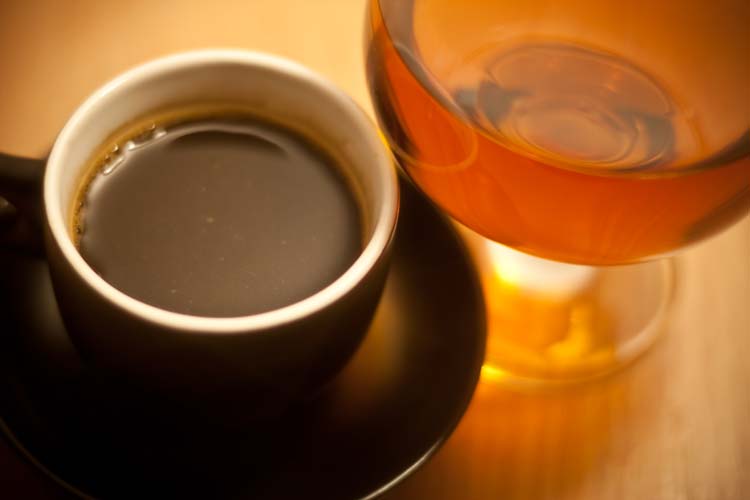 Do you have your favorite Italian coffee? Let us know! And don’t forget to share this article with your friends, especially if they’re Italian coffee-lovers!
Do you have your favorite Italian coffee? Let us know! And don’t forget to share this article with your friends, especially if they’re Italian coffee-lovers!




